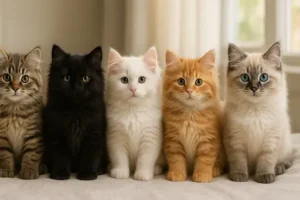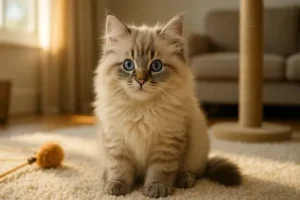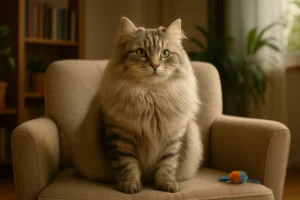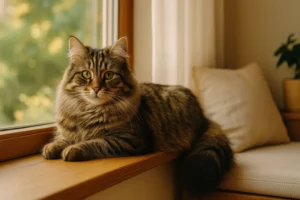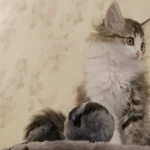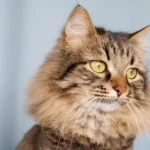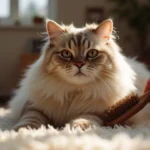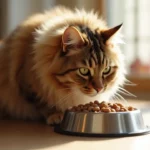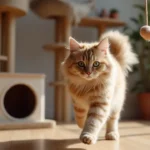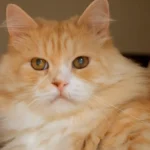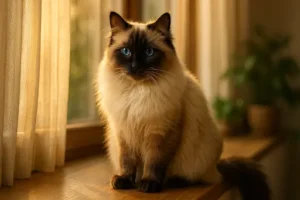
Tabby Siberian Cat Colors & Patterns: A Complete Guide for Cat Lovers
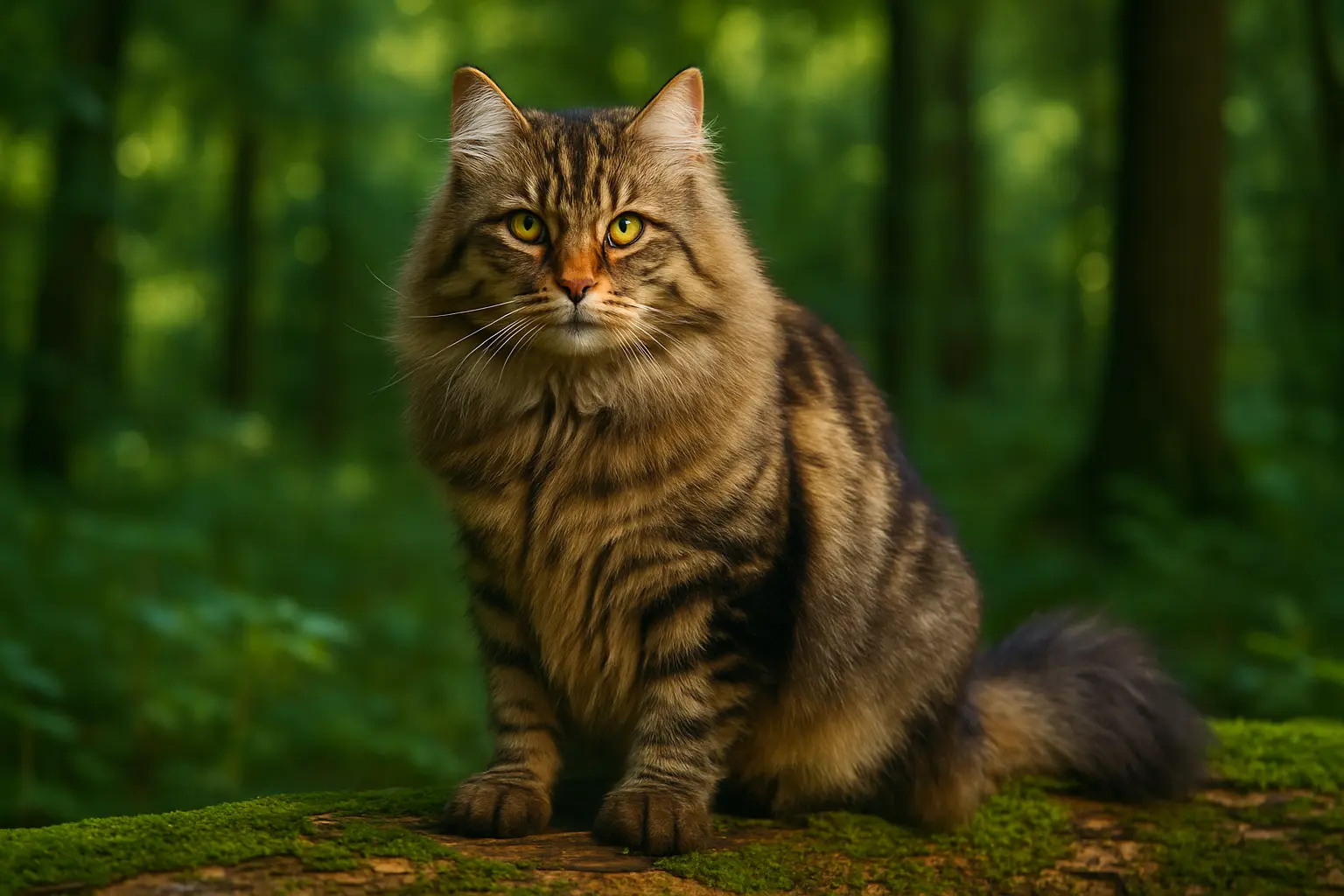
Siberian Tabby Cat is not only a size and personality worthy of reverence, but is also a visual masterpiece in terms of the coat patterns. Through this comprehensive guide, we will learn all about tabby Siberian cats, like what makes them tabby, the various tabby color variations like brown, silver, blue, black, golden, and gray and the types of tabby patterns exhibited by this breed like classic, mackerel and spotted.
You will also know their genetic history, how to determine which type of cat you own, and whether these gorgeous cats are hypoallergenic. At the end, you will get a full picture of the unique aspects of tabby Siberians, both in appearance and their personality.
Wichtige Highlights
- Tabby patterns are genetic and not breed-specific and can be found in Siberians, as they have forest-dwelling ancestry.
- Classic tabby pattern is swirled in marble cake, and mackerel is similar to the stripes of a tiger.
- Siberian cats are possibly hypoallergenic, with reduced concentration of the Fel d 1 protein, and therefore may suit some allergy patients.
What Is a Tabby Siberian Cat?
A tabby Siberian cat is a Siberian breed strain of feline that has the tabby coat pattern, a natural pattern occurring in several domestic cats. This pattern is particularly beautiful in Siberians, whose dense triple coat and forest background are the result of their lineage. Tabby is not a breed but just a genetic pattern that superimposes the underlying color of the cat with swirls, stripes or spots.
Tabby Siberian Cat Color Variations
Let’s explore the most popular and recognized tabby color variations in the Siberian cat breed.
1. Brown Tabby Siberian Cat
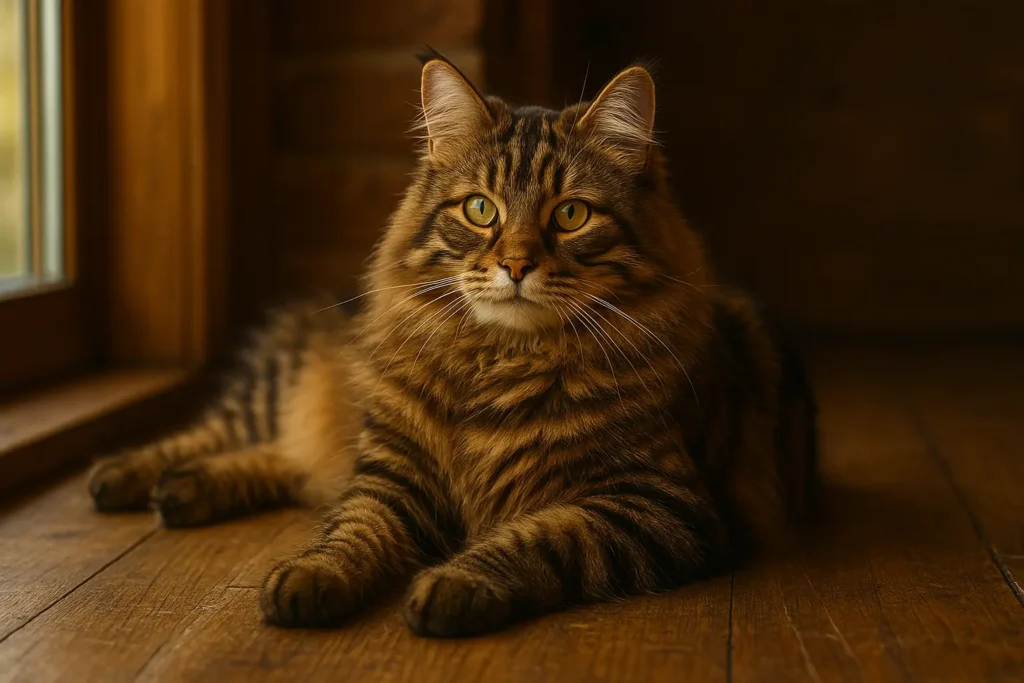
Brown tabby Siberians are the most traditional appearance of the breed; they are brown in base with dark black or chocolate stripes. Such a mixture usually makes them wild and woodland looking, befitting their Russian forest cat origins.
2. Silver Tabby Siberian Cat
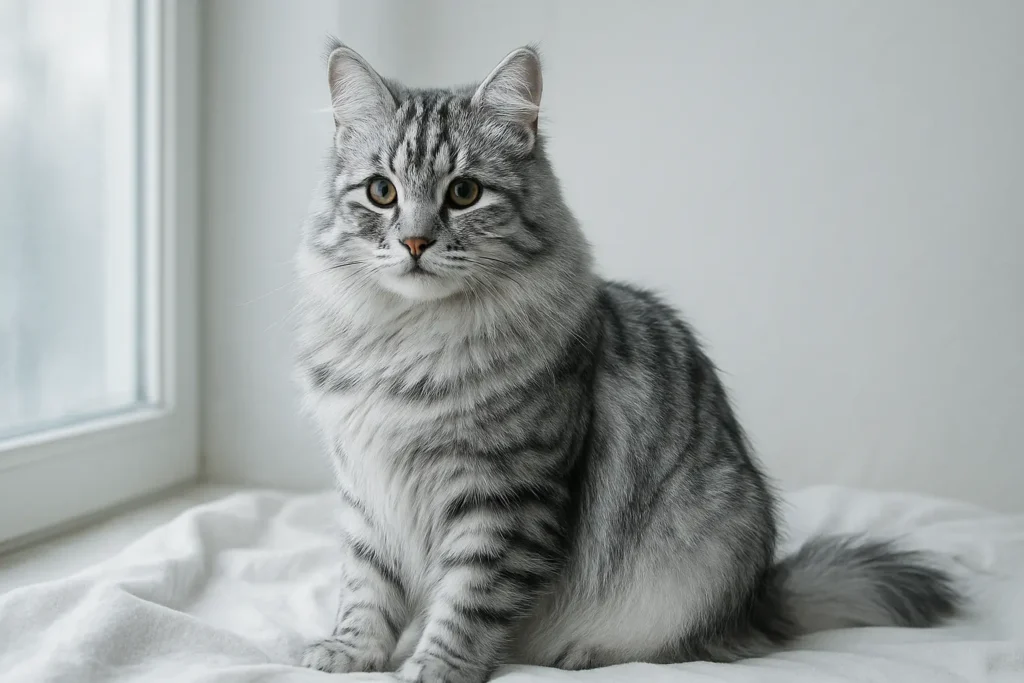
The silver tabby Siberian cat is of a glittering silver or white base with black markings. The warm pigmentation is inhibited by a special gene, and the coat appears frosty and regal.
3. Blue Tabby Siberian Cat
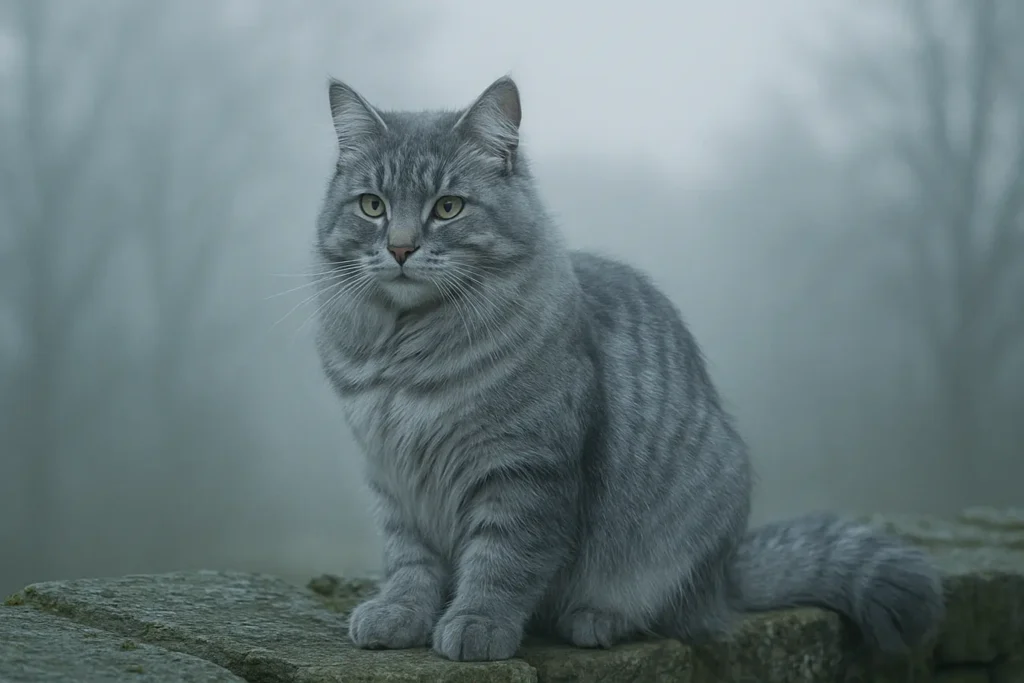
Such cats are soft blue-greys with light gray or bluish hair. The black is diluted in color making them have the velvety and mysterious appearance of the color blue.
4. Black Tabby Siberian Cat
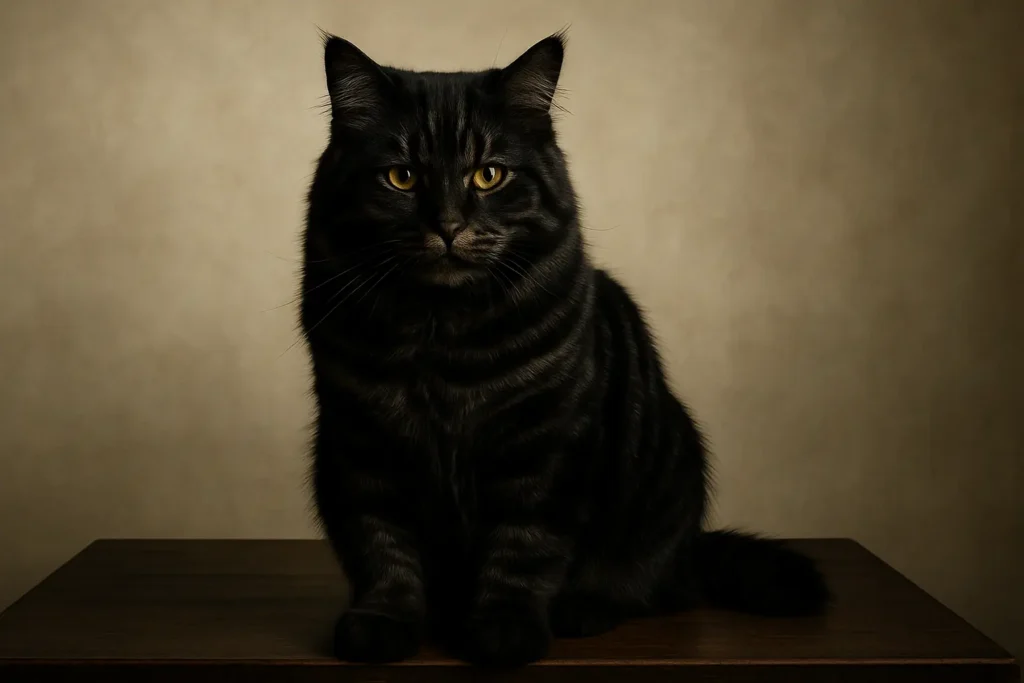
Black tabbies have severe black markings but with a lower base, normally taking on a deep charcoal or dark grey. Their outspoken contrast and expressions make them a favourite among exotic cat lovers.
5. Golden Tabby Siberian Cat
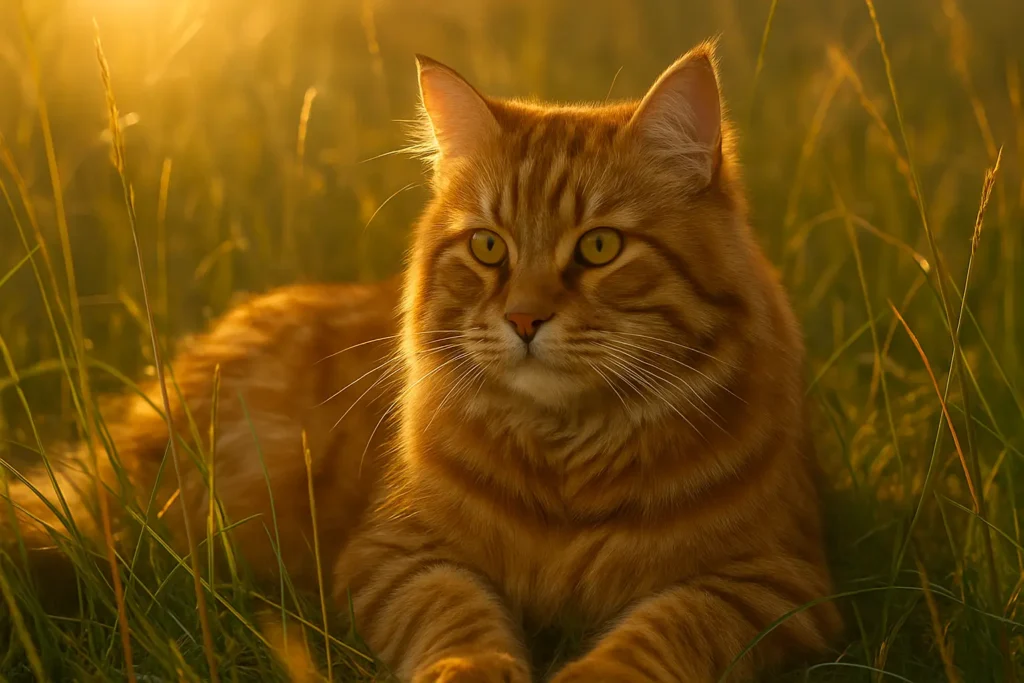
The golden Tabby is very special and exclusive, with golden-colored undertones and medium-dark brown striping. This is a much-desired variation in cat shows as it possesses a warm and glowing appearance.
6. Gray Tabby Siberian Cat
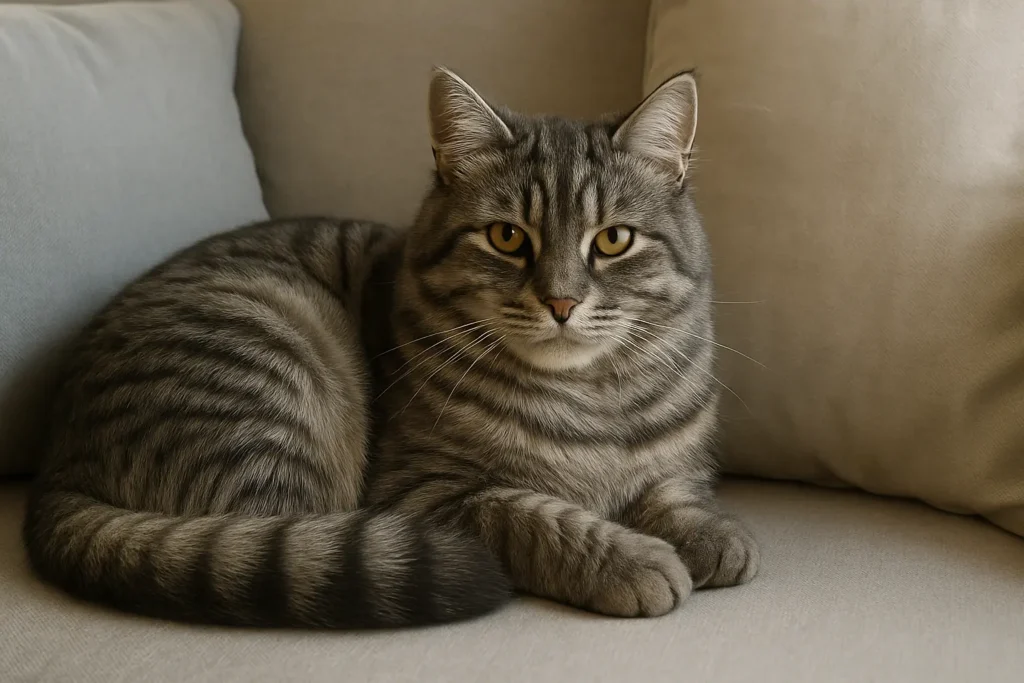
These cats are sometimes referred to as silver-blue or cool grey tabbies, and they might look like blue tabbies except that they might not have the warm dilution. They have light gray or ash ground with clear striping on the coat.
Types of Tabby Patterns in Siberian Cats
Siberian cats are capable of displaying a variety of tabby patterns to provide the coat with a different texture and visuality:
- Classic (Blotched): In swirling, such as on sides, such as a marble cake.
- Mackerel: slender, curved lines, which create the look of a tiger.
- Spots: Round or oval patches in place of stripes or swirls; not very frequent in this breed.
Why Tabby Patterns Are Common in Siberians
Siberian cats have a deep-rooted genetics of the tabby pattern. These markings were a survival strategy in the wild, as their origin is in the forest of Russia, which served as camouflage. These trends were maintained over time, and they were perfected with the help of selective breeding.
How to Identify Your Tabby Siberian Cat’s Type
Which type of tabby cat is yours:
- Check base colour: Brown, silver, blue, etc.
- Note marks: Are they swirled, striped or spotted?
- Look at the undercoat: A golden or silver sheen could be an indication of rare forms.
- To be on the safe side: ask your breeder or your vet to have your genetic testing.
Are Tabby Siberian Cats Hypoallergenic?
Siberian cats are widely sold as hypoallergenic, given that they have lower quantities of the Fel d 1 protein, which is the primary cause of cat allergies. Although not every person reacts in the same way, many allergy sufferers can live with tabby Siberian cats without problems as compared to other breeds.
Conclusion
It can be the vivid stripes of a brown Tabby Siberian cat or the shimmering coat of a silver tabby, but all the changes demonstrate the beauty of nature and the ancestry of the breed. The knowledge of such colors and patterns not only aids in determining your type of cat but also enhances your relationship with this great cat. Regardless of the color, tabby Siberian cat has always been an everlasting favorite of cat lovers.
Check out our guide on Maine Coon vs Sibirische Katze.
Häufig gestellte Fragen
No, even though the most popular pattern is the Tabby, Siberians are also offered in solid colors, bi color, color point and tortie.
The golden tabby Siberian cat is the most sought-after and rarest because of its warm golden color and rarity in breeding lines.
Search for different patterns, e.g. stripes, swirls, or spots. The other typical indicator of a tabby pattern is an M shape on the forehead.
Not directly. Although some people think that there are colours that express personality, it is more of a cat's personal temperament and its surroundings.
Not exactly. Although they look alike, blue tabbies are more diluted black with a bluish color whereas gray tabbies can be colder or have more neutral coloring on the underbelly.
Sibirische Katze Info – Ihre Vertrauenswürdige Quelle für Experten-Tipps, breed Fakten und Pflege-guides über Sibirische Katzen.

